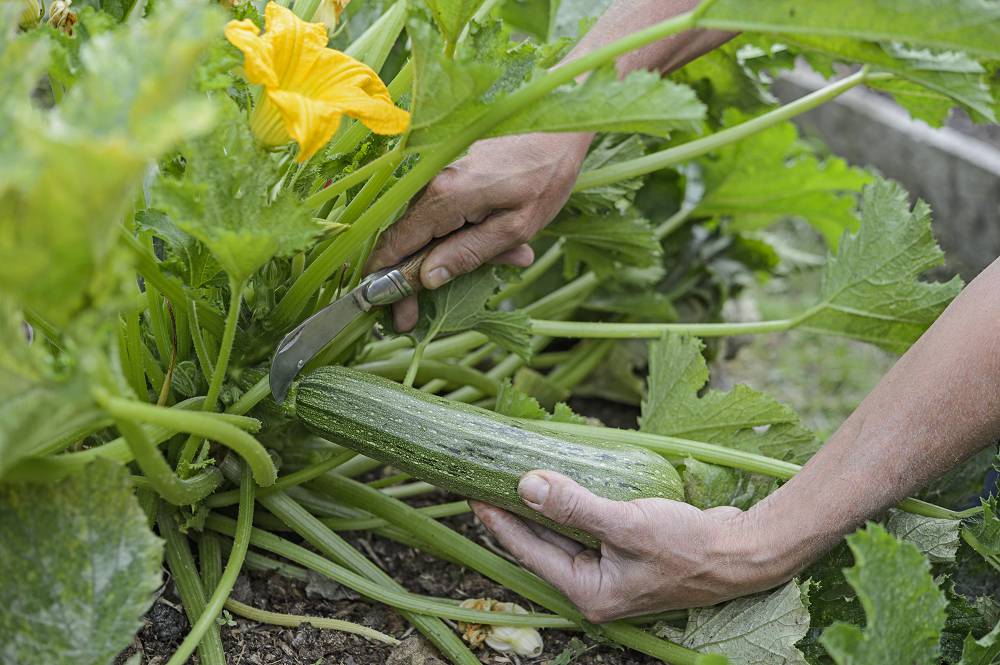More than 9 things you can do in the vegetable garden in July

In the vegetable garden in July, you can literally reap the rewards of your labor. Many crops, such as runner beans, potatoes, and raspberries, are ready to be harvested. But July is also a great time to plan ahead and start sowing for the fall and winter.
Read more below the advertisement
Prepare for the coming months by sowing things like kale, lettuce , spinach, and radishes . There are also plenty of other chores to do: from pruning to harvesting!

When it's warm and humid, fungi can more easily take hold of your plants. Pay particular attention to dark edges on the leaves to spot the first signs of disease. Tomatoes grown outdoors are more susceptible to late blight .
Prevent your tomatoes from diverting their energy from producing side branches instead of flowers and fruit. You can do this by pinching them out, i.e., removing the side shoots that emerge from the axils between regular side branches and the main stem. Cut the top off the plant once it reaches about two meters in height and has produced four to six flower clusters.



Many fruit trees, such as apples and pears, are pruned in winter. But an (established) plum tree is best pruned in summer , after harvest. Try to create a cup-like shape, with an open center. This allows light, air, and sun to reach the fruit.

It's worth growing this forgotten vegetable yourself, as you can harvest twice from a single plant. Not only the delicious root is edible, but also the leaves. Eat this vegetable soon after harvesting, as it doesn't store well. Sow directly in shallow furrows for a tasty winter harvest.

July is the last month you can sow summer carrots for autumn harvest. Sow them directly and thinly in shallow furrows of well-prepared soil. Sowing in deep pots or containers is also possible. Avoid thinning carrots, as this can attract carrot root fly .

Although most gardeners grow cabbage for the summer, several varieties are cold-resistant. This makes them suitable for sowing now for winter enjoyment. Be sure to cover the plants with netting to prevent cabbage whites.
Brussels sprouts, kale, red cabbage (choose a winter variety), and kale are examples of winter cabbages. Chinese cabbage and bok choy are actually autumn cabbages. Always sow these after the longest day of the year, June 21st, so you can harvest them well into November.


Just like with carrots, July is the last month to sow green beans. This gives the pods time to ripen before autumn gets too cold. Sow low-growing varieties directly in the ground or in pots and ensure they are well-watered.

After months of preparation and care, you'll be rewarded in July with delicious, homegrown vegetables and fruits. You can harvest all these crops, among others:
- Artichokes and various beans are also ready to pick this month.
- Also harvest everbearing strawberries and raspberries . If birds are a problem, cover the fruit with bird-friendly netting.
- July is cherry month. Cut the ripe cherries with scissors or pick them by hand. Make sure the stems remain attached.
- You can harvest your first harvest of runner beans this month. Pick regularly to keep flowering – and therefore the harvest – going.
- If you planted your zucchini in mid-May, you can harvest your first fruits now. They grow quickly, especially when it's wet and warm. Harvest zucchini when they're about 15 cm long; that's when they're at their best.
- You know the first shallots of the season are ready for harvest when the foliage dies back. Shallots are sweeter and milder than onions and are delicious in sauces and quiches.
- Early blueberry varieties are ripe now. For later varieties, you'll have to wait until September or even October. Be careful not to pick them too early, or they won't be sweet enough.

Get started growing your own food and incorporate your fresh harvest into one of over 50 recipes, including those by renowned Dutch and Flemish chefs! And perhaps the best part: by following our practical tips, you'll experience the joy and pride of serving something you grew yourself.
- Our best tips for year-round cooking from your own garden
- From patio to allotment: vegetable gardening is possible everywhere!
- With recipes from famous Dutch and Flemish chefs


%3Aformat(jpeg)%3Abackground_color(fff)%2Fhttps%253A%252F%252Fwww.metronieuws.nl%252Fwp-content%252Fuploads%252F2018%252F02%252Fmt_f7e703bb4e530e998d15172bcbba2aa2.jpg&w=3840&q=100)



